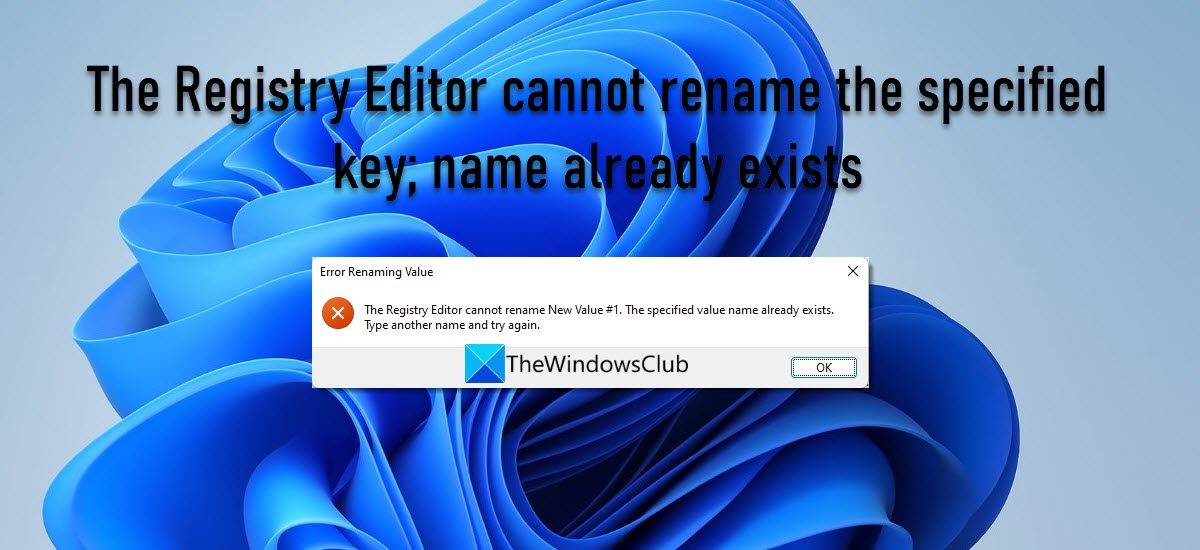This could possibly occur if the ‘rename’ value you’re trying to enter already exists in the Windows Registry. Or, when you try to use an existing name with a different letter case. In this post, we will explain why the Error Renaming Value error occurs and how to fix it. The Registry Editor cannot rename [key]. The specified value name already exists. Type another name and try again.
Fix The Registry Editor cannot rename, The specified key name already exists
Windows Registry essentially doesn’t have a ‘rename’ function. When a user tries to rename a key, it recreates the entire key structure (root key and subkeys), gives the user-specified name to this new key, copies over values to the root key and the subkeys, and then deletes the old key. It all happens so quickly that it appears as if the Registry Editor is renaming a key. When the new key name matches an existing name in Windows Registry, the registry editor is not able to recreate the key structure, which results in the Error Renaming Value prompt. If you get the same error prompt and you’re not able to figure out why you’re getting the error, we’ll help you sort it off.
We recommend the following solutions to fix the Registry Editor cannot rename the specified key name already exists error: Let us have a look at these solutions one by one.
1] Use a name that differs by more than just the letter case
Windows Registry is not case-sensitive. So it would read ‘Test_key’ and ‘test_key’ as the same. While renaming a key, make sure you do not enter a name that matches an existing key name, irrespective of its letter case. If you do so, you’ll get the Error Renaming Value prompt. Search for existing Windows registry keys to make sure the name you’re trying to enter doesn’t already exist in the system. Also read: Windows Registry Editor Tips & Features.
2] Check whether the key is a system-critical registry key
3] Gain full permission to edit the registry key
Sometimes you need to take full permission for the registry key and then try. Some registry keys cannot be altered unless you take ownership of the keys. If you try to modify such keys without ownership, you may run into errors, such as error creating key, error editing value, cannot import; error accessing the registry, etc. Make sure you back up the Registry and Windows before making any changes to the Registry Editor. You can quickly take ownership of the keys using our freeware RegOwnIt and Ultimate Windows Tweaker. Or follow the steps listed below to manually gain permissions to edit the registry key:
How do I rename registry keys?
To rename a registry key, launch the Registry Editor and locate the desired key on the left panel. Then right-click on it and select the Rename option. Type the new name for the key and press Enter. Please note that to rename a key, you may have to take ownership of the key or need to have Create Subkey access to the root key and Delete access to all its subkeys.
How do I give permission to modify a specific registry key?
In some cases, you need to give permission to modify or change a specific registry key on Windows 11/10 PC. In such situations, you can use the RegOwnit app. However, if you want to do it manually, you can follow this guide to take ownership or full control of a Registry key to edit it as per your requirements. Read Next: Windows Registry tweaks to improve performance and experience.
